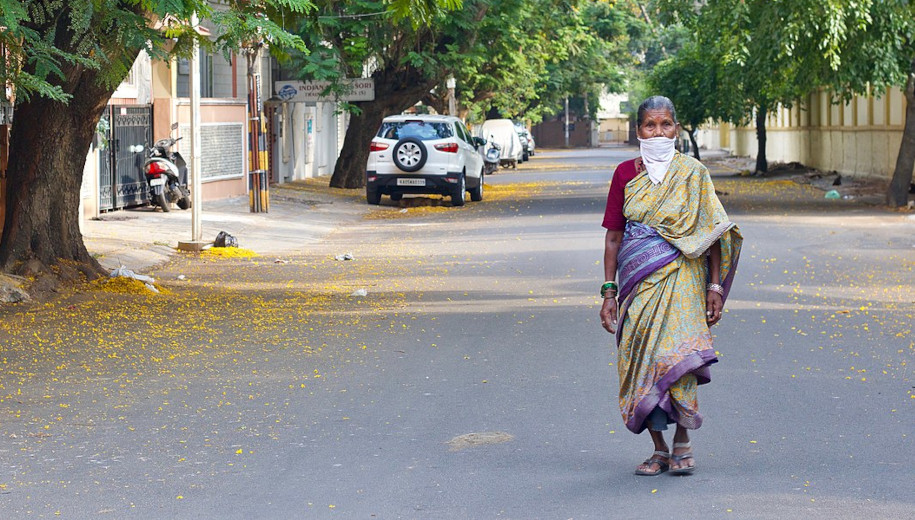17/02/21
‘India’s COVID-19 infections grossly underestimated’

By: Claudia Caruana
Send to a friend
The details you provide on this page will not be used to send unsolicited email, and will not be sold to a 3rd party. See privacy policy.
India’s southern state of Karnataka alone may have had 31.5 million cases of COVID-19 or nearly 95 times greater than have been reported, says a new study that puts a question mark on the 10 million plus cases reported for the whole country so far.
Published this month in the Journal of the American Medical Association, the study is based on data collected from a representative sample of households in 20 districts of Karnataka, home to 70 million of India’s 1.3 billion people.
As of Monday, 15 February, according to Worldometers, India had recorded 10,916,589 cases of COVID-19, second only to the US with 28,261,470 cases. Brazil came in third with 9,834,513 cases.
Anup Malani, an author of the study and professor at the University of Chicago’s Law School and Pritzker School of Medicine, tells SciDev.Net that while official reports suggest that the virus has infected ten million people in India, the testing rates are low. “Our study has a more precise estimate of the spread of COVID-19,” he says.
Researchers collected data from households in urban and rural areas of the state of Karnataka on antibodies for recent and past COVID-19 infection using a test that targets the RBD spike protein and better identifies exposure to the COVID-19 virus rather than other coronaviruses.
Malani says a unique feature of the study is that it tested the same individuals for current infections using the RT-PCR test. “This pairing allows the study to both report current levels of immunity and forecast future immunity because most of today’s infected population will, in a few weeks, join tomorrow’s immune population,” he emphasises.
Manoj Mohanan, co-author of the study and associate professor of global health at the Sanford School of Public Policy, Duke University, North Carolina, says that 44.1 per cent of the population in Karnataka’s rural areas and 53.8 per cent in the urban areas tested positive for antibodies to COVID-19 by the end of August 2020.
The researchers found that rural areas had nearly the same level of exposure to COVID-19 as urban areas. Although cities were more densely populated, rural areas faced additional risk because agriculture is an essential sector and exempted from lockdown restrictions.
In Karnataka, says Malani, 46 per cent of the population had COVID-19, which is 95 times the amount reported. A subsequent study in Tamil Nadu suggests that 32 per cent of the people there have had it or 36 times the official number. Both studies were done with approval or in collaboration with the state governments.
“If COVID-19 is much more widely spread, it tells us two things,” says Malani. “Assuming death statistics are correct, the infection fatality rate is lower. On the other hand, India’s efforts to control spread of the virus were less successful than many other countries. We need to investigate how India can do better in the next pandemic, especially if it is more dangerous to Indians than COVID-19.”
“We need to investigate how India can do better in the next pandemic, especially if it is more dangerous to Indians than COVID-19”
Manoj Mohanan, Duke University
Malani believes that underestimation, as seen in rural India, is possible in other areas of south and south-eastern Asia. “Low testing rates are common among low- and middle-income countries, and low testing could be a function of low state capacity,” he tells SciDev.Net.
High seroprevalence in the rural areas of Karnataka and Tamil Nadu was attributed by Malani to millions of migrants fleeing the cities for rural areas once the lockdown was lifted in May. Although cities were more densely populated, rural areas faced additional risk because agriculture was exempted from lockdown restrictions.
Neelanjan Sircar, professor of economics, Ashoka University, Sonipat, India, says the study allows comparison of rural and urban populations. “We may understand the core trade off in spread of infection between urban and rural areas in India in the following way: urban may be more susceptible to spread due to density of social contact, but they have also seen greater state intervention in stemming spread as compared to rural areas.”
“The study estimates that infection was about 10 percentage points higher in urban areas (54 per cent) as compared to rural areas (44 per cent),” Sircar adds. “This provides evidence that state control measures in urban areas did not fully mitigate the greater risk of spread in urban areas.”
This piece was produced by SciDev.Net’s Asia & Pacific desk.














